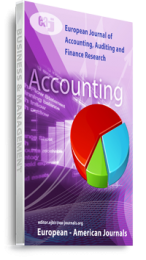The theory of capital structure and its relationship with a firm’s value and performance has been a puzzling issue in corporate finance and accounting literature since the Modigliani and Miller theory (MM) (1958) argue that under the perfect capital market condition which assume that, if without bankruptcy cost and capital markets are frictionless, if without taxes, and without asymmetric information the firm’s value is independent from capital structure. According to MM theory, the only variables that determined firm value was its future earnings power (expected cash flow) and hence the capital structure decision is irrelevant. Since that time, several theories have been developed to explain the capital structure of a firm including the Pecking Order Theory, Trade off theory, and the Agency Cost theory. This paper will shed light on the concept of capital structure, its theories and link with firms’ performance.
Keywords: Capital Structure, Performance

